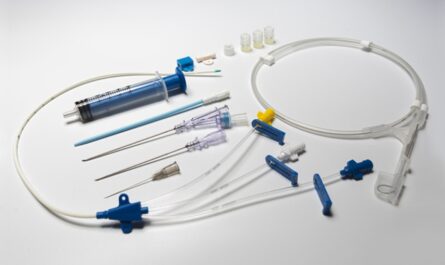
What is Light Therapy?
Light therapy, also known as phototherapy, involves exposure to bright light, usually during the morning hours. This exposure helps regulate the brain’s clock and reduces symptoms of certain conditions like seasonal affective disorder (SAD), insomnia, and other sleep issues. Regular light therapy sessions can improve mood, energy levels, and sleep quality.
How Does It Work?
Our bodies have an internal clock called the circadian rhythm which regulates sleep-wake cycles and many important biological and physiological functions like body temperature, hormone levels, and more. Exposure to natural sunlight in the morning helps synchronize this internal clock.
During winter months or in geographical regions with less sunlight, the internal clock can get disrupted leading to circadian rhythm disorders. Light therapy works by exposing the eyes to bright artificial light that tricks the brain into thinking it’s daytime even indoors. This helps reset the body clock to reduce symptoms like fatigue, low mood, and sleep disturbances associated with conditions like seasonal affectiveness.
The light needs to be bright – at least 2,500 lux equivalent to indoor office lighting. Most light therapy boxes produce between 5,000-10,000 lux for optimal effect. The timing is also crucial with early morning light therapy sessions proving most beneficial.
Effects of Light Therapy
Light therapy can help boost serotonin and melatonin levels in the brain which play a role in regulating mood and sleep. Here are some of its main effects:
– Improves Seasonal Affective Disorder (SAD) Symptoms: Light therapy is very effective at reducing low mood, fatigue, and other depressive symptoms associated with the shorter winter days.
– Enhances Mood and Energy: Studies have found light therapy effective at improving overall mood, reducing irritability, and boosting energy levels noticeably.
– Regulates the Sleep-Wake Cycle: It synchronizes the circadian rhythm helping establish a regular sleep-wake schedule and reduce insomnia, excessive daytime sleepiness, and jet lag.
– May Help Other Conditions: Some research indicates it may help certain non-seasonal forms of depression, bipolar disorder, and shift work sleep disorder. However, more studies are still needed.
– Lasting Benefits: While light therapy needs to be continued, many people report feeling its anti-depressant benefits for weeks after daily light therapy sessions are over.
Who Benefits the Most?
While light therapy is generally safe, certain groups tend to benefit more than others:
– People with Seasonal Affective Disorder: As its very effective for SAD symptoms during fall and winter months when days are shorter.
– Older Adults: Elders are more prone to circadian disruptions so light therapy can help regulate their sleep-wake cycles better.
– Travelers and Shift Workers: It helps overcome jet lag or adjust to working night shifts by resynchronizing the body clock.
– Patients with Mood Disorders: Along with medication or therapy, light therapy provides an added boost for conditions like non-seasonal depression.
Safety Considerations
Side effects are usually minor like eye strain or headache. Some safety points to keep in mind:
– Avoid direct eye exposure and use a medical-grade light therapy device.
– Start with shorter 10-15 minute sessions and slowly increase duration under medical guidance.
– Do not use tanning beds or sunlight as a substitute as those emit UVA/UVB rays.
– Discuss with your doctor about any medications especially if on antidepressants to rule out interactions.
– Chronic conditions like bipolar disorder or eye disorders need specialized care from a mental health provider experienced in using light therapy.
Frequency and Duration
For best results, 30 minutes daily light therapy sessions are recommended, especially in the early morning around sunrise simulation. Most courses last 4-6 weeks but can continue as a maintenance treatment during fall/winter months. Following medical supervision, the treatment can be continued as needed.
Overall, light therapy provides a natural, drug-free approach for circadian rhythm and mild to moderate mood disorders. It works best when combined with lifestyle modification and other treatments. Discuss options with your doctor or mental health provider to determine if it can help your specific condition or needs.
*Note:
- Source: Coherent Market Insights, Public sources, Desk research
- We have leveraged AI tools to mine information and compile it

